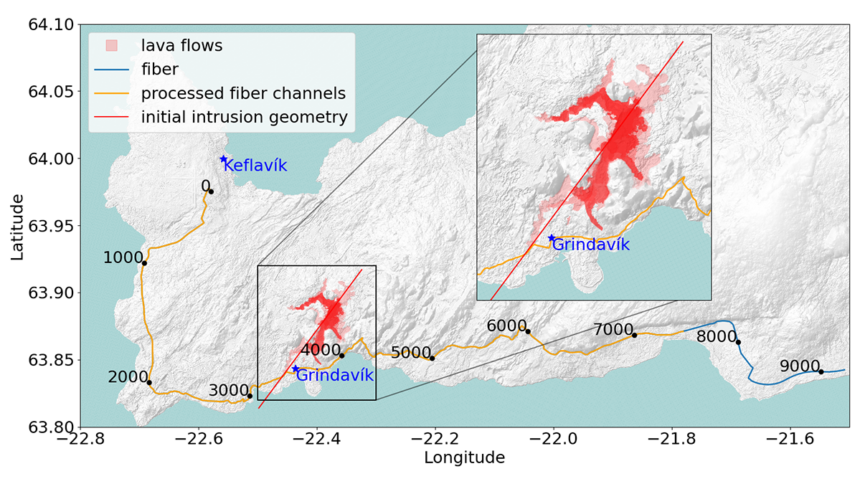
Editors’ Highlights are summaries of recent papers by AGU’s journal editors.
Source: AGU Advances
Over the past five years, fiber-optic telecommunication networks have increasingly been used as dense sensor arrays, transforming cables into high-resolution strain detectors at meter-scale intervals. This innovative approach has opened new possibilities for monitoring subsurface processes, including volcanic activity.
During a volcanic eruption, magma movement stretches and compresses the surrounding rock, causing both deformation and changes in seismic wave speed—critical data for estimating magma intrusion. Before the 2023-2024 eruption sequence on Iceland’s Reykjanes Peninsula, a 100-kilometer fiber-optic cable was converted into a dense seismic sensor array, allowing the tracking of seismic velocity variations of about 2% linked to dike intrusions. Notably, the inferred geometry of the first dike matched independent geodetic measurements and surface fissures.
Bird et al. [2025] validates fiber-optic sensing as a new tool for monitoring dike intrusions and highlights its potential for detecting seismic velocity changes and their underlying processes in regions where geodetic and seismic methods are difficult to combine, such as offshore environments. While some uncertainties remain, fiber-optic sensing is rapidly advancing as a key tool for early warning systems.
Citation: Bird, E., Atterholt, J., Li, J., Biondi, E., Zhai, Q., Li, L., et al. (2025). Constraining dike opening models with seismic velocity changes associated with the 2023–2024 eruption sequence on the Reykjanes Peninsula. AGU Advances, 6, e2024AV001516. https://doi.org/10.1029/2024AV001516
—Marcos Moreno, Editor, AGU Advances







